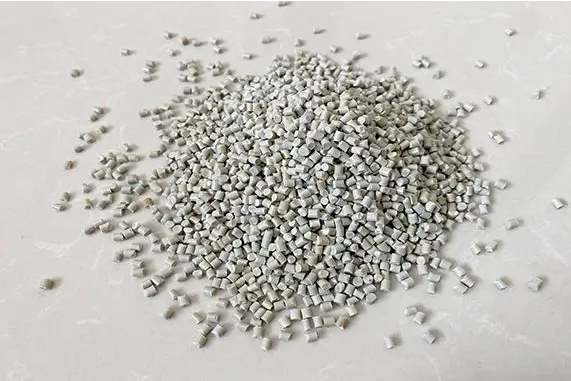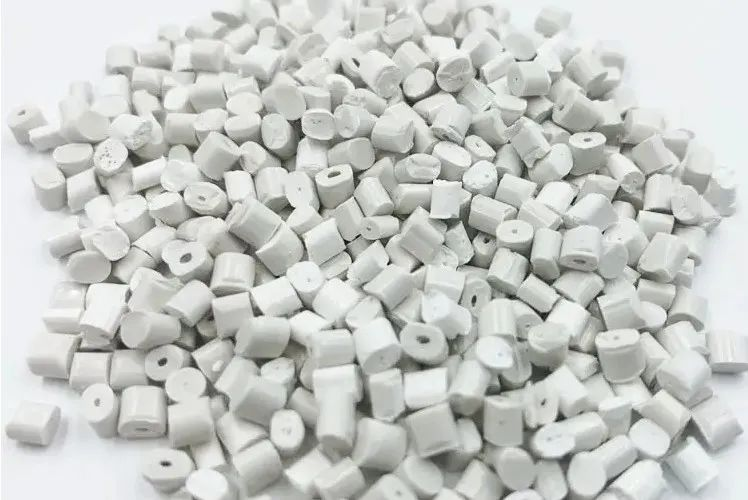Features of PC/ABS

Polycarbonate (PC) is a thermoplastic engineering plastic with excellent comprehensive properties. It has the characteristics of high temperature resistance, flame retardancy, good electrical insulation, stable size, non-toxic and tasteless.
However, PC also has disadvantages such as high melt viscosity, poor fluidity, sensitivity to notch, easy stress cracking, poor resistance to organic chemicals, and high price, which limits its application in many fields.
ABS
-Acrylonitrile – Butadiene – Styrene-
ABS combines the properties of three monomers. Its low-temperature impact resistance, chemical resistance and molding performance are good, and its price is relatively cheap. It is widely used in automobiles, electrical appliances, instruments and meters, etc., but it has flame retardancy, High temperature resistance and poor weather resistance and other shortcomings.

PC and ABS
Advantages of blending
PC/ABS alloy combines the excellent properties of the two polymers, and improves the deficiencies in certain properties of PC and ABS.
Compared with pure PC, the fluidity of PC/ABS alloy is improved, the processing performance is better, and the stress sensitivity of the product is reduced.
Compared with pure ABS, PC/ABS has significantly improved mechanical properties, heat resistance, and flame retardancy, so it is widely used in the production of automotive interior parts, communication equipment, electronic appliances, lighting equipment, etc.
– coace –

Theoretical Basis of PC/ABS Alloy Blending
In order to ensure an excellent blending effect, five principles should be considered when blending different types of polymer materials: polarity matching, similar surface tension and diffusion capacity, equal viscosity, and similar solubility parameters.
les
In addition, the process compatibility of two-phase materials should also be considered, that is, the inherent possibility of two phases being miscible, or separated, or undergoing phase transition under a certain temperature and pressure.
In order to improve the compatibility between polymers and improve the mechanical properties of alloy materials, the most effective way is to add a compatibilizer to the blend system.
Because the compatibilizer can reduce the surface tension between the polymers and the particle size of the dispersed phase, increase the thickness of the interface layer, improve the stability of the blended phase structure, and thus improve the mechanical properties of the alloy.
– coace –
Development Trend of PC/ABS Alloy
At present, PC/ABS alloy technology fills the gap in the performance of single-species plastics with its special properties. PC/ABS alloying research has become a hot spot in polymer alloy research.
(1) PC/ABS alloy will develop towards high performance and functionality, and its application fields will continue to expand.
After decades of exploration and development, PC/ABS alloy has made great progress. With the expansion of the application field of polymer materials and the improvement of the performance requirements of the materials used in industrial production, a single type of polymer can no longer meet the actual needs. Dozens of PC/ABS alloys with various performance characteristics can be provided in the world to meet the needs of automobiles, electronic appliances, office supplies and other fields. In the future, PC/ABS alloy will further develop towards high performance and functionalization, and its application fields will continue to expand.
(2) At present, the flame retardant of PC/ABS alloy materials tends to be halogen-free.
Halogen-free flame retardants have become a research hotspot all over the world, and are the main trend in the development and application of flame retardants. At the same time, the development of flame retardants is developing in the direction of multi-functionality, with the goal of improving flame retardant efficiency, reducing dosage, and reducing harm to health and the environment.
(3) Adapt to market demand, develop high-end PC/ABS alloy products, and increase the added value of product technology.











